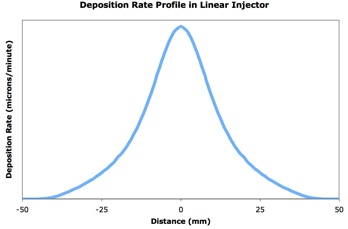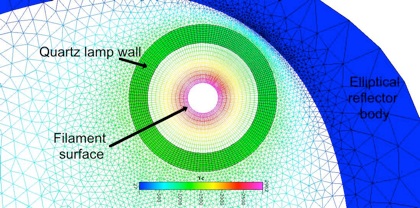
Application Note:
CVD and Zone Melt Recrystallization for Photovoltaics

Crystalline silicon solar cell technology remains largely rooted to wafer-based cell structures fabricated from silicon wafers sliced from ingots. This method carries few technical risks as it relies on standard Czochralski crystal growth, wafering, and junction formation processes that have been understood and scrutinized for decades. Many alternate structures and processes for Si solar cells have been proposed, most of which are intended to reduce the total amount and cost of silicon consumed per watt of power while maintaining the desirable properties of Si as an absorbing layer. Some of these alternate methods employ Si layers epitaxially grown on low-quality or inexpensive Si substrates, while other methods may involve Si deposition on ceramic or amorphous substrates. In the former case the Si deposition can occur at high temperatures required to maintain crystallinity of the deposited layer; no post-treatment is required to improve the deposited layer. The latter case usually requires a secondary thermal step to recrystallize the deposited amorphous or microcrystalline Si layer into a phase appropriate for use as an active layer. Design of equipment to perform these process steps must therefore be based upon these two critical tasks:
-
-
•Si deposition via CVD at deposition rates sufficient to meet throughput and cost targets.
-
•Remelt of the deposited layer at process line speeds.
-
CFD and thermal simulations are essential for both tasks.

Simulations of thin oxide film deposition for passivation, optical coupling, or transparent conducting layers are equally useful for equipment design and sizing considerations. SiO2 deposition simulations from silane/O2 or even TEOS/O3 precursors are made possible by calibrated reaction mechanisms for APCVD, SACVD, or LPCVD conditions.
All these CVD simulations allow explorations of the relative merits of the deposition architectures, including for example line-source gas injection (linear injector curtains) or impingement (showerhead) systems, or hybrids of the two.
Melting and recrystallization of the deposited silicon layers can occur in zone-melt recrystallization (ZMR) apparatus, in which substrates moving at net process speeds pass through a stationary melt zone often employing tungsten halogen lamps focused to a line of appropriate width. This elegant method demands a high level of control of the lamp power to maintain a constant molten line width. Moreover, the high temperature and high heat fluxes involved require proper sizing of the lamps and component parts, proper design of reflectors to focus the radiant energy to a line, and good estimation of total heat balances to properly size cooling fluid systems. Much of this can be accomplished with 2-dimensional thermal simulations using the proper physical models for radiant energy transfer. Monte Carlo methods are typically required, which account for wavelength- and temperature-dependent optical properties of materials and allow for semi-transparency. Silicon’s optical properties are highly wavelength- and temperature-dependent, so accurate estimations of ZMR processes for Si solar cells are usually impossible without Monte Carlo radiation models.

All Content Copyright 2011 nVision Engineering LLC. All rights reserved.